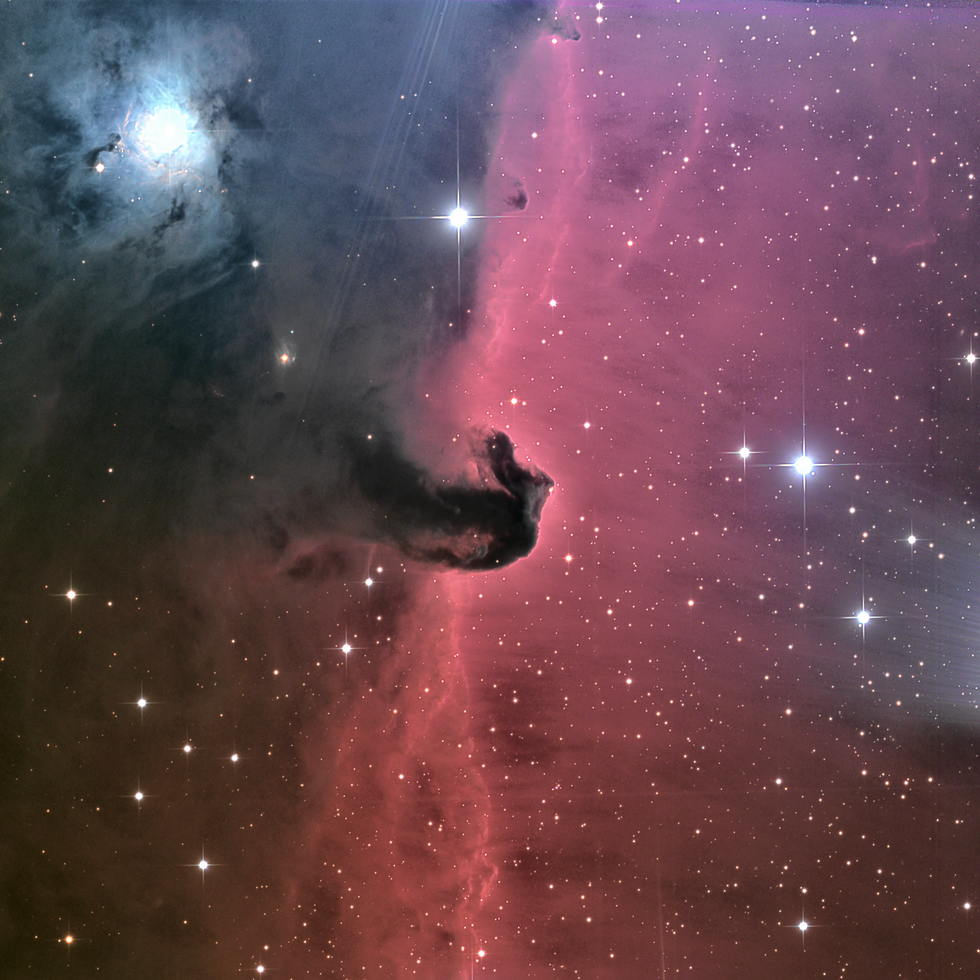Horsehead nebula: Barnard 33
Horsehead nebula: Barnard 33
The Horsehead Nebula is perhaps the best-known of the "dark markings of the sky" in the catalogue published by E.E. Barnard in 1919, where he described it, rather prosaically, as "Dark mass, diam. 4', on nebulous strip extending south from zeta Orionis".
[Zeta Ori, the most easterly star in Orion's Belt, is actually a foreground object, not connected with the Horsehead. The bright nebulosity is, instead, excited by sigma Ori, to the right (west) of this image. The roughly horizontal 'streaks' that are just visible in the bright nebula are real, not processing artefacts; they are probably the result of an interstellar magnetic field.]
Curiously, Barnard sometimes referred these features as 'black holes' -- a term that has a very different meaning today.
[Zeta Ori, the most easterly star in Orion's Belt, is actually a foreground object, not connected with the Horsehead. The bright nebulosity is, instead, excited by sigma Ori, to the right (west) of this image. The roughly horizontal 'streaks' that are just visible in the bright nebula are real, not processing artefacts; they are probably the result of an interstellar magnetic field.]
Curiously, Barnard sometimes referred these features as 'black holes' -- a term that has a very different meaning today.
SPECIFICATIONS
Telescope
CHI-1
Camera
FLI PL9000
Location
Chile
Date of observation
2019
Filters
LRGB
Processing
Pixinsight



